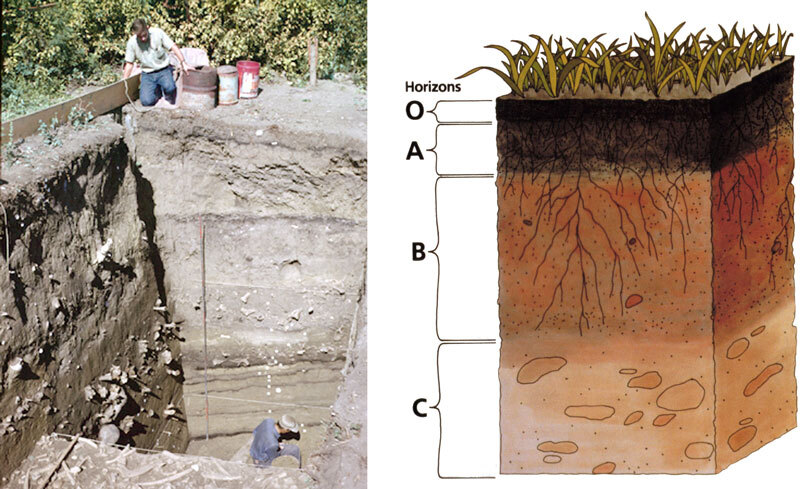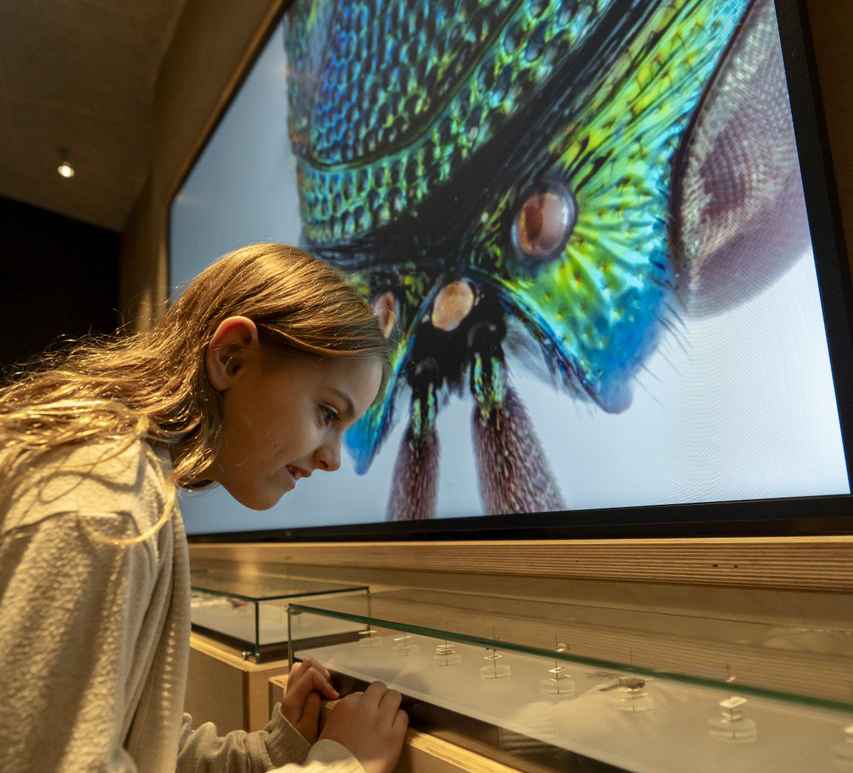
West Wall profile at the Gull Lake Site (EaOd-1), a bison drive and kill site in the Missouri Coteau. The site was excavated from 1960-1963, without bracing, which is highly not recommended.
This is becoming a very important question in North and South America. Soil scientists have identified how sediments deposit and age through time. Horizons (identified as the “A”, “B” and “C” horizons) develop and have unique properties, often with unique colours associated with them. Archaeologists learn how to identify changes that they see in sediments in archaeological sites. Not only do people leave behind a lot of interesting stuff, they also cause disturbance in the sediments. That disturbance is also often visible as a colour change in the sediments across a site or within a site, in specific features. All of these colour changes in the sediments are clues that help archaeologists identify what part of what soil horizon they may be in and how disturbed the soil is. Here in Saskatchewan, glacial clay deposits can be very massive and deep and they are generally sediments that do not contain evidence of human occupation. If you dig through an A and B horizon and then encounter glacial clay that looks undisturbed, you would only dig another 10 to 20 centimetres into the clay, confirm that it is ‘sterile’ (no evidence of human occupation) and stop digging.
The oldest archaeological culture in North and South America is known as Clovis and dates to approximately 12,500 years ago. Archaeologists have stopped digging at sites once they encounter Clovis cultural remains at sites. They have assumed the sediments below to be ‘sterile’ and stop digging. In more recent years (the last 15), some archaeologists have kept on digging after encountering Clovis materials. Amazingly, they have encountered other cultural materials below the level of Clovis remains. This is something new and is going to result in a change in excavation strategies by archaeologists on how to identify the ‘sterile’ levels of excavations. Archaeologists are now aware that there are “Pre-Clovis” cultural materials to be found and dated. Not all archaeologists accept this new evidence of people being in the Americas at an earlier date. It is an area for new future research.

